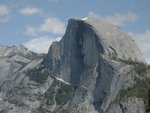DIAGNOSTIC DISCUSSION
issued by
CLIMATE PREDICTION CENTER/NCEP/NWS
and the International Research Institute for Climate and Society
5 June 2014
Synopsis: The chance of El Niño is 70% during the Northern Hemisphere summer and reaches 80% during the fall and winter.
Above-average sea surface temperatures (SST) expanded over the equatorial Pacific Ocean during May 2014 (Fig. 1), though the collective atmospheric and oceanic state continued to reflect ENSO-neutral. All of the Niño indices increased during the month, with the latest weekly values between 0.6oC and 1.6oC (Fig. 2). In contrast, subsurface temperature anomalies decreased over the last two months (Fig. 3), but still reflect a large pool of above-average temperatures at depth (Fig. 4). The low-level winds over the tropical Pacific remain near average, except for westerly anomalies over the eastern Pacific. At upper-levels, anomalous easterly winds have predominated over most of the equatorial Pacific. Unlike the previous month, convection was near average across most of the tropics (Fig. 5). The lack of a clear atmospheric response to the positive SSTs indicates ENSO-neutral, though the tropical Pacific continues to evolve toward El Niño.
Over the last month, the chance of El Niño and its ultimate strength weakened slightly in the models (Fig. 6). Regardless, the forecasters remain just as confident that El Niño is likely to emerge. If El Niño forms, the forecasters and most dynamical models, such as NCEP CFSv2, slightly favor a moderate-strength event during the Northern Hemisphere fall or winter (3-month values of the Niño-3.4 index between 1.0oC and 1.4oC). However, significant uncertainty accompanies this prediction, which remains inclusive of a weaker or stronger event due to the spread of the models and their skill at these lead times. Overall, the chance of El Niño is 70% during the Northern Hemisphere summer and reaches 80% during the fall and winter (click CPC/IRI consensus forecast for the chance of each outcome).








